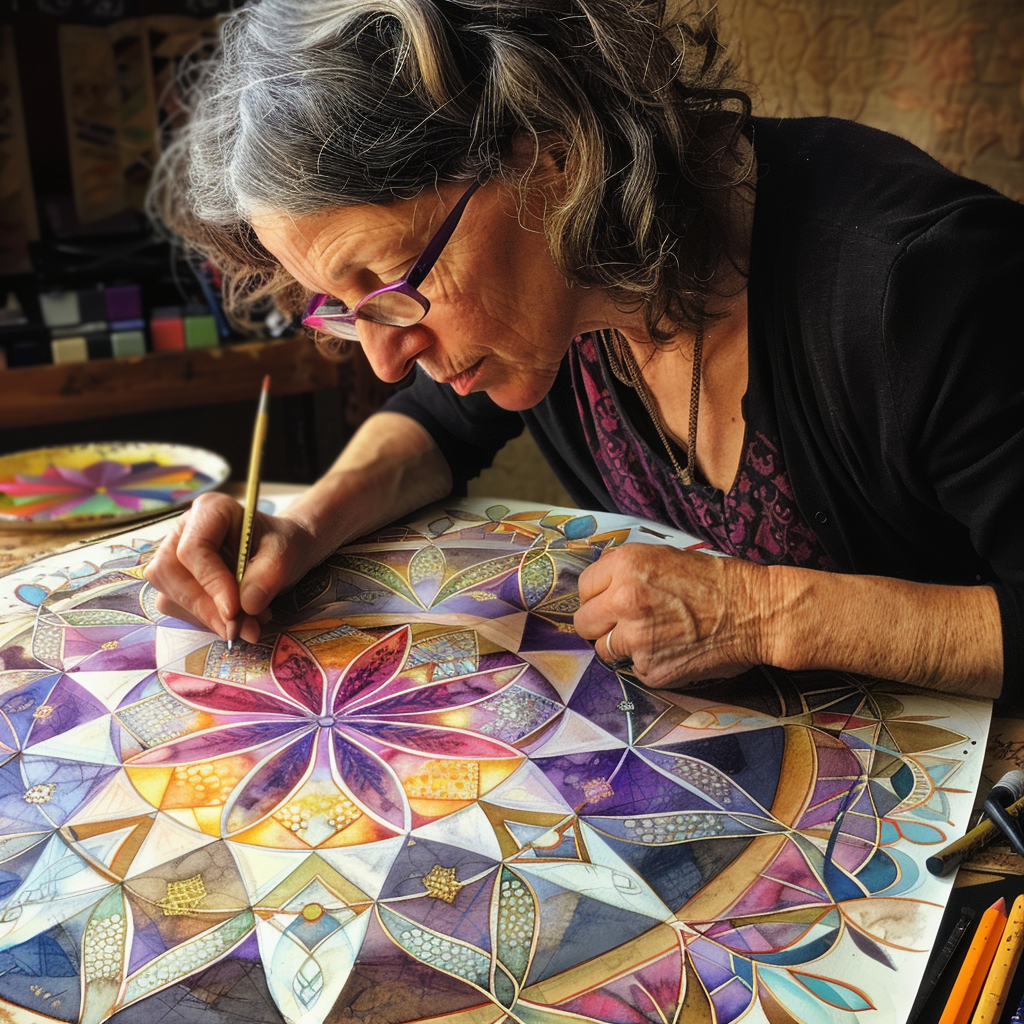Sacred Geometry
Sacred Geometry is often described as the architecture of the universe—a blueprint that reveals the hidden structure of everything around us. From the smallest particles to the vast cosmos, the patterns of Sacred Geometry underlie all creation. Whether seen in the spirals of galaxies, the petals of a flower, or the formation of crystals, these patterns reflect a fundamental order and harmony.
Ancient cultures around the world recognized these patterns and used them to build structures, create art, and symbolize the interconnectedness of life. Sacred Geometry involves shapes like circles, triangles, hexagons, and the five Platonic solids, each carrying unique meanings. These shapes are seen as templates for creation, representing everything from the elements (fire, earth, air, water, ether) to the stages of life and consciousness.
Sacred Geometry is more than just a concept; it's a way to see and interact with the world. By learning and using these patterns, you can bring more balance, harmony, and insight into your life. Whether through drawing a simple circle or contemplating the complexities of Metatron’s Cube, these designs help connect you to the deeper truths of the universe.
The Power of Patterns in Psychology
Humans are naturally drawn to patterns. Our brains are wired to recognize and make sense of patterns, which is why Sacred Geometry can be such a powerful tool in therapy. Geometric patterns help individuals explore their emotions, uncover unconscious thoughts, and connect with deeper parts of themselves. Creating or contemplating these shapes promotes a sense of peace, focus, and clarity, offering a non-verbal means of self-expression and emotional release.
In therapeutic settings, working with geometric shapes can bring about a meditative state that reduces anxiety and organizes thoughts. Each shape, like a circle symbolizing wholeness or a star representing expansion, provides a visual language that can facilitate healing and personal transformation.
History of Sacred Geometry
-
The Pyramids of Giza are known for their precise geometric design, reflecting advanced understanding of the Golden Ratio and Pi.
-
Mathematicians like Pythagoras and Plato explored geometric forms as representations of universal truths. Plato’s work on Platonic solids has been foundational to the study of Sacred Geometry.
-
Mandalas and yantras are intricate geometric patterns used for meditation and spiritual practices, symbolizing the universe and enlightenment.
-
Geometric patterns feature prominently in Islamic architecture, reflecting spiritual unity and order, with the Alhambra in Spain as a prime example.
-
Today, Sacred Geometry is used in fields such as design, physics, and cosmology, showing the continued relevance of these timeless patterns.
Sacred Geometry Art Therapy
A transformative tool designed to help you explore the deep significance of geometric patterns in both art and self-discovery. This kit will guide you through fundamental sacred geometry shapes, their spiritual meanings, and hands-on activation practices, integrating them into art therapy and holistic well-being through the Active Kreative approach.
FAQs
Q: What makes Sacred Geometry ‘sacred’?
A: It is considered ‘sacred’ because it reflects universal patterns of order and harmony, symbolizing the deeper truths of existence. These shapes have been used in spiritual practices to connect with the essence of life.
Q: Can anyone learn to use Sacred Geometry?
A: Absolutely! No prior artistic or mathematical skills are required. It’s about connecting with the essence of the patterns, not technical perfection.
Q: How does Sacred Geometry promote healing?
A: Sacred Geometry aids in healing by creating balance and harmony. It engages both logical and creative parts of the brain, promoting mindfulness and providing a visual language for self-expression.
Q: What do I need to start practicing Sacred Geometry?
A: Simple tools like a compass, ruler, paper, pencils, and colors are enough to get started. For a more immersive experience, our Sacred Geometry Activation Kit includes templates, instructional guides, and more.






